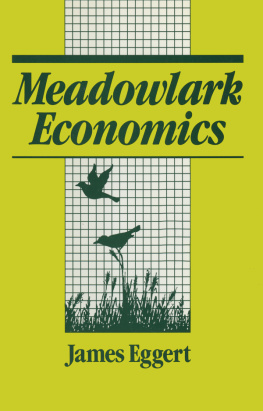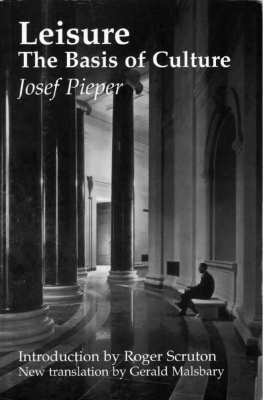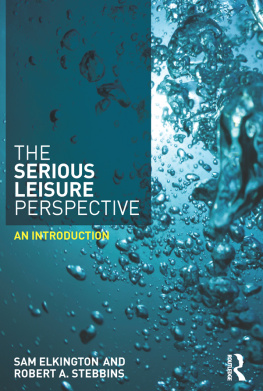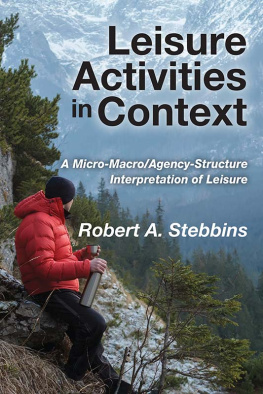First published in 1961 by
Routledge
Reprinted 1998, 2000 by
Routledge
2 Park Square, Milton Park, Abingdon, Oxon, OX14 4RN
Transferred to Digital Printing 2007
Routledge is an imprint of the Taylor & Francis Group
1961 Nels Anderson
All rights reserved. No part of this book may be reprinted or reproduced or utilized in any form or by any electronic, mechanical, or other means, now known or hereafter invented, including photocopying and recording, or in any information storage or retrieval system, without permission in writing from the publishers.
The publishers have made every effort to contact authors/copyright holders of the works reprinted in The International Library of Sociology. This has not been possible in every case, however, and we would welcome correspondence from those individuals/companies we have been unable to trace.
British Library Cataloguing in Publication Data
A CIP catalogue record for this book
is available from the British Library
Work and Leisure
ISBN 0415176948
The Sociology of Work and Organization: 18 Volumes
ISBN 0415178290
The International Library of Sociology: 274 Volumes
ISBN 041517838-X
Publishers Note
The publisher has gone to great lengths to ensure the quality of this reprint but points out that some imperfections in the original may be apparent
Preface
W RITERS about work rarely have much to say about leisure. This has already been said in one of the chapters which follow, but I think it bears repeating. It also bears repeating that writers about leisure give very little attention to work. Another neglect, it seems to me, concerns the kind of society we live in today; the meaning of work and leisure in this society. The way of life is that of people, most people including countrymen, set in the midst of an industrial urban environment largely of mans own making. Much of this way of life is new, almost unrelated to precedent, and not only new but changing.
That writers on work look in one direction and writers on leisure look in another should not surprise us. Rather, it emphasizes how work and leisure under industrial urbanism have been separated. But this separateness appears to be a passing thing. We must remember that research in both work and leisure is new, most of the literature has appeared during the past three decades, and the most penetrating materials have appeared during the past decade. In fact, some of the most promising studies are only now under way.
What we can hardly escape recognizing, once we examine work and leisure in relation to each other is that we are dealing with uses of time, and different dimensions of time. Because time has been used efficiently in work we get leisure. We sell time so that time not sold may be used as we like. We find that production and consumption are opposite uses of time and in both kinds of activity time may be measured in money values. But time as an abstraction becomes the measure of such other abstractions as space, distance and motion, so pertinent to technological and scientific development incident to more efficient production. Industrial urban man has moved out of the sphere of natural time into that of mechanical time, dominated and paced by the clock in both work and play.
Yet the clock-paced man remains a life-cycle creature. He tries to extend his life expectancy but the life cycle stands and it becomes the central problem of his existence. If he lives the full estimated cycle, a little more than half of his life will be given to productive work, nearly a fourth of his years will be used in growing up and in preparing for a career. At the conclusion a fifth to a fourth of his years will be occupied with trying to hold on a little longer in the labour market or trying to live outside of it. But the entire cycle is lived in situations of clock-time values and of social values themselves responsive to the time-paced tempo of the mode.
The course of the cycle is no longer a series of easy transitions from one phase to another. In each phase of his life the individual finds his economic worth changes both as producer and consumer. His roles change and in matters of leisure he is a different customer for the leisure industries. Because of this obvious importance of life-cycle changes I endeavored to examine it in relation to work and leisure; hence the chapters on youth, the middle years and old age.
In the course of preparing this book the materials seem to point to certain conclusions. Although I have hesitated to venture into conclusions, I have at least implied a number of theses, and four of these seem especially pertinent. Each of these opens a special field of study.
1. Non-work Obligations. Definitions of leisure often include categories of activities, but many off-the-job activities turn out to be nothing like paid work nor yet like leisure. One works in the garden, helps around the house, does favours for the neigh bours, works for the trade union, the political party, the church, the community centre and so on. These are often called non- work obligations and they often yield leisure-like satisfactions. The more the individual is integrated into family life, organized group life and community life the more of his free time is likely to be given to such activities, and often the less interest he has in leisure. There is good reason to believe that as people become more identified with non-work activity the less need they have for leisure and the more their leisure is linked with these activities.









